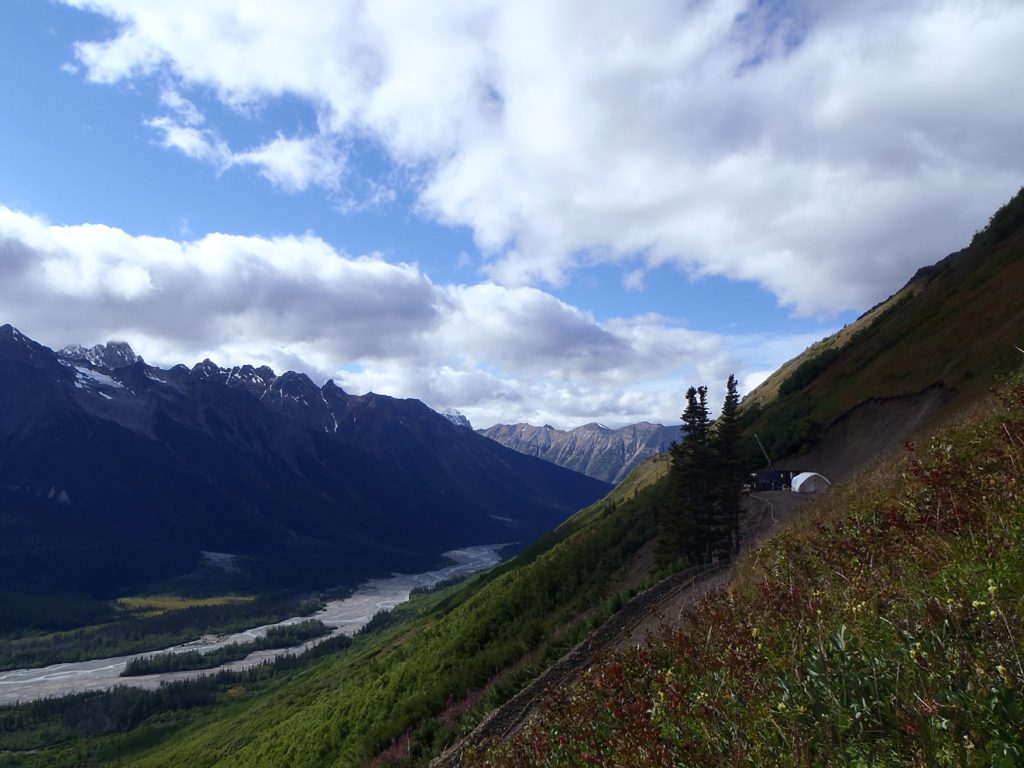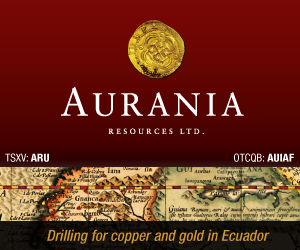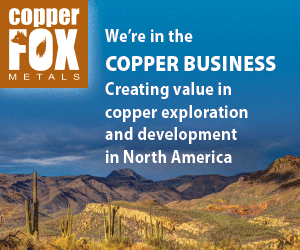Copper to play leadership role in bullish outlook for base metals

TAKING STOCK
By David Duval
With the COVID-19 Â pandemic devastating much of the global economy it almost seems counterintuitive that base metals, most notably copper, would be in such high demand – not to mention trading at near record highs.
Ever since the advent of the industrial era, copper has been a barometer of global economic activity and there are good reasons for that. Because of its ability to conduct heat and electricity, copper is essential in the production of electrical equipment such as wiring, motors and industrial machinery. Not surprisingly, the housing market is a major consumer of copper as is the automotive industry.
Today, markets for copper concentrate remain tight, partly due to production constraints imposed by the COVID-19 pandemic. In addition, production in two major producing countries, Chile and Peru, have trended downward this year because of record high cumulative COVID-19-related mine production disruptions. Contributing to the shortfall, Rio Tinto delayed the restart of its Kennecott mine in Utah due to maintenance.
Antaike, the China Nonferrous Metal Industry Association’s research department, revised its 2020 forecast for refined copper imports as June and July saw record import levels. The agency estimates 3.8 million tonnes of refined copper imports for 2020 compared to 3.55 million tonnes imported in 2019. Moreover, Antaike confirms that China’s State Grid will increase its investment by the end of 2020 which will increase copper demand.
China’s September copper imports were the second-highest level on record as recovering factory activity boosted demand for the metal despite increasing prices.
Australia’s ANZ Research notes that “Strong industrial and construction activity continued to drive primary copper demand,” adding further that “China’s plan to build strategic reserves is likely to keep imports resilient as well.”
Massive fiscal stimuli in major economies throughout the world continue to bolster the fortunes of this important industrial metal. Indeed, the futures market remains heavily in long territory compared to the early half of the decade, according to the latest COT (Commitment of Traders) report.
Copper demand is expected to continue to grow, driven by building, construction and electrical network infrastructures. Additionally, targeted green economy investments by governments globally have increased the demand forecast for copper in the electric vehicles and renewable energy markets.
Comparisons are being made to the commodity bull market of 2009, suggesting that copper prices have further potential to rise.
US investment firm, Goldman Sachs, is forecasting a bull market for commodities in 2021 based on its outlook for a weaker dollar, inflation, and the prospect of further economic and fiscal stimulus. They are predicting a 12-month return of 30% on the S&P’s Goldman Sachs Commodities Index and are recommending long positions in a basket of metals including silver, copper and gold.
Goldman cites tightening supply amid adverse weather conditions and greater demand from China for its bullish outlook, noting that “Economic stimulus measures in the world’s second-largest economy have helped to drive demand for metals to its highest level since 2011.” The company expects base metals and agriculture to have “more near-term upside than oil, with smaller inventories to move through before prices begin to rise.”
Goldman’s head of commodities research, Jeffrey Currie, recently said in a research note that: “Given that inventories are drawing this early in the cycle, we see a structural bull market for commodities emerging in 2021.”
COVID-19 impacted the broader metals market in a similar fashion including the zinc concentrate market which remained in deficit in the third quarter. Analysts cite production and logistics issues in Latin America, combined with lower Chinese domestic mine production, with exacerbating the shortage of material available to smelters late in the year. Zinc is used as a galvanizing agent in steel manufacturing to inhibit rust.
According to Teck Resources, a major zinc miner and refiner, “Chinese zinc mine production was down 3.8% year to date to July, while smelter production was up 2.4% according to the International Lead Zinc Study Group. Zinc concentrate shipments into China rose 39% to the end of August over the previous year. Despite an increase in imports over 2019, the global concentrate market remained tight, as supply from Latin America during the first three quarters remained under pressure.”
“The slow reopening of economies in Europe and North America started to bring buyers back into the market. In China, manufacturers returned to normal operating rates with galvanized steel benefiting from improved construction and infrastructure demand. In the rest of the world, construction and infrastructure demand remained relatively stable while manufacturing and automotive demand have been slower to recover.”
According to Fitch Solutions’ latest industry report, zinc prices will edge higher over the remainder of 2020, continuing a strong rebound from the lows posted during the initial COVID-19 outbreak. However, a long-term structural downtrend in zinc prices is forecasted by Fitch to begin in 2021.
Stainless steel demand, the primary driver of nickel prices, was 14.5% higher year-over-year in third quarter 2020, largely due to production increases in China which helped offset weakness in Europe and North America.
Nickel is the most expensive material in electric vehicle batteries after cobalt and is also one of the most highly used outside of the battery industry. Sales of electric vehicles (EVs) worldwide increased 60% year-over-year in Q3, mainly due to sales strength in Europe. While electric vehicle passenger car sales are forecasted to increase slightly this year, the overall auto industry is expected to decline approximately 15 to 20%. This has pushed the EV penetration rate to the highest on record.
The nickel market is projected to be in surplus in 2020 given the fact COVID-19 has impacted demand, particularly in the high-value markets such as aerospace, automotive and oil & gas sectors. Nonetheless, positive signs have emerged including increased Chinese stainless-steel production along with a strong rebound in EV and automotive sales.
The long-term prospects for nickel remain positive and the successful development of a COVID-19 vaccine might help boost depressed markets such as airlines and Oil & Gas which are directly related. In addition, governments globally have committed record amounts of fiscal stimulus that will lend further support to the “green economy.”
 Aurania Resources Ltd. [ARU-TSXV; AUIAF-OTCQB; 20Q-0FSE] is currently drilling 16 precious metal and base metal targets in Ecuador. The company has identified over 50 prospective targets that could potentially host several different types of mineral deposits: epithermal gold, iron oxide copper-gold (IOCG), silver-lead-zinc, porphyry copper, and sedimentary copper-silver deposits.
Aurania Resources Ltd. [ARU-TSXV; AUIAF-OTCQB; 20Q-0FSE] is currently drilling 16 precious metal and base metal targets in Ecuador. The company has identified over 50 prospective targets that could potentially host several different types of mineral deposits: epithermal gold, iron oxide copper-gold (IOCG), silver-lead-zinc, porphyry copper, and sedimentary copper-silver deposits.
Aurania’s targets are analogous to known major deposits. For example, the gold-silver epithermal targets use Lundin Gold’s Fruta del Norte deposit as an exploration guide and the Spanish Colonial mines of Logrono and Sevilla, believed to be located within the concession area, are also thought to be of this type. Its silver-lead-zinc targets are similar to Pan American Silver’s Navidad deposit or deposits in the Cerro de Pasco district of Peru. To be brief, Aurania’s other target types are also analogous to well-known mineral deposits.
The Company has funding for 11,000 metres of drilling with each target receiving 1,000 to 4,000 metres of drilling in three to five holes. With so many targets to test in this scout drilling program, Aurania is utilizing light-weight, man-portable drill rigs to make for better logistics.
If the initial drilling of a target makes an interesting discovery, a second drill rig will be brought in for follow-up.
The IOCG system identified in the Tsenken N2 target area extends to target Tsenken N3, where it strengthens and the where the first copper mineralization identified in the drill core at Aurania’s flagship Lost Cities-Cutucu Project in southeastern Ecuador.
Aurania’s chairman and CEO, Dr. Keith Barron, noted that the Tsenken N2 and N3 targets form part of a single, large IOCG target that covers over 20 km2. IOCG systems are typically large and contain gold as well as copper. Exploration elsewhere in the concession area is identifying other IOCG targets consistent with IOCGs typically being in clusters. A helicopter-borne mobile magnetotellurics survey is underway, and should detect conductive sulphides expected to be in the central part of the IOCG system.
Following the scout drilling at Tsenken, the company will target Tiria-Shimpia which could host a silver-zinc-lead system similar to the Cerro de Pasco District.
For sediment-hosted copper-silver, with evidence of a copper-silver mineral belt in adjacent Peru, Aurania has applied for exploration concessions there covering over 400,000 hectares where more targets will be tested. The company’s exploration concessions in Ecuador cover 208,000 hectares.
The management team at Aurania is particularly well qualified with three PhD’s, a mining engineer, former investment banker and a civil and mining engineer. The management team at the Ecuadorian subsidiary is also well qualified. CEO Dr. Keith Barron, as well as other insiders put up much of the early high-risk capital in the early, riskiest stages of the exploration program. Today, insiders own about 44% of outstanding shares.
Aurania is well-funded. On October 29 the company announced the closing of an $11.5-million public offering. Cantor Fitzgerald Canada was lead underwriter with a syndicate of underwriters, including Canaccord Genuity, Echelon Wealth Partners, Eight Capital, Haywood Securities and Raymond James. The company has approximately 44 million shares outstanding.
Aurania Resources represents an opportunity to be in on the ground floor of South American mineral discoveries with potential to make multiple discoveries in Ecuador and Peru.
 Surge Copper Corp. [SURG-TSXV; GRJVF-OTC] is moving to capitalize on renewed investor interest in copper metal by advancing a merger and acquisition strategy that aims to consolidate strategic porphyry districts in British Columba.
Surge Copper Corp. [SURG-TSXV; GRJVF-OTC] is moving to capitalize on renewed investor interest in copper metal by advancing a merger and acquisition strategy that aims to consolidate strategic porphyry districts in British Columba.
It hopes to achieve this goal after recently watching the price of copper rally to a 7-year high on the back of ongoing U.S.-China trade tensions and hopes that deployment of COVID-19 vaccines will accelerate a global economic recovery and boost demand for the metal.
On Monday December 21 copper was trading at US$3.56 a pound, just below the recent high of US$3.57, and up from US$2.10 in March 2020.
The foundation stone for Surge’s strategy is its 100%-owned Ootsa Project in British Columbia, which contains three large copper porphyry deposits located beside the Imperial Metals Corp. [III-TSX] Huckleberry mine and mill complex.
A preliminary economic assessment (PEA) completed in 2016 has estimated that the three deposits (Ox, East Seel and West Seel) contain a measured and indicated pit constrained resource of 224 million tonnes, hosting 1.1 billion pounds of copper and 1.0 million ounces of gold (2.5 billion pounds of copper equivalent – CuEq).
The company has ambitions plans to materially increase its large resource base through expansion drilling and M&A activity and is looking at potential for building a large scale, stand-alone mining operation. A 10,000-metre drill program is in progress at Ootsa to test the expansion and near-deposit exploration potential of the Seel Cu-Au-Mo porphyry trend.
A 3D IP survey conducted this summer identified multiple geophysical anomalies over the Seel Trend which are currently being tested by one of the two drills active on the property. The second drill is focused on expanding the large West Seel deposit, were recently released hole S20-219 returned an impressive 700 metres grading 0.51% CuEq, including 422 metres grading 0.60% CuEq.
Surge Copper recently solidified its position in the district by entering a definitive option agreement with Thompson Creek Metals Company, a wholly-owned subsidiary of Centerra Gold Inc. [CG-TSX]. Under the terms, Surge can earn a 70% interest in the Berg copper-molybdenum-silver project by issuing $5 million worth of common shares and spending $8 million on the project over five years.
The Berg property hosts a large porphyry Cu-Mo-Ag deposit in the Tahtsa Ranges approximately 28 km northwest of Surge’s Ootsa Project. A 2018 historical resource estimate stands at 397 million tonnes grading 0.44%. Measured and Indicated Resources are 14 million tonnes grading 0.34% CuEq. Inferred Resources have not been calculated.
Prior to launching the 10,000-metre drill program on late October, 2020, the company closed a non-brokered flow-through private placement that raised $6 million from the sale of 40 million flow through units priced at 15 cents each.
Each flow-through unit consists of one flow-through share and one flow-through share purchase warrant entitling the holder to purchase an additional non-flow through common share for 17 cents for up to three years after closing.
The completion of this financing, together with the exercise of over 7.0 million previously issues share purchase warrants that generated $1.08 million, has left the company with $7.6 million in the treasury.
On December 21, 2020, Surge shares were trading at 76 cents in a 52-week range of 85 cents and $0.02, leaving the company with a market cap of $61, 484,000, based on 80.9 million shares outstanding.
The share price has almost doubled in value since November 26, 2020 tabled assay results from the upper portion of hole S20-218 the first hole of the 2020 drilling program. The upper part of the hole, drilled through the East Seel deposit returned 176.1 metres of copper equivalent.
That includes higher grade portions of 126.0 metres grading 0.89% copper equivalent and 32 metres grading 1.30% copper equivalent. The company says it is fully funded to expand the 10,000-metre drill program as conditions warrant.
Aside from Ootsa, the company also holds a 2% net smelter return royalty interest on the Auro and Auro South properties, which cover 23,000 hectares and are adjacent to the Artemis Gold Inc. [ARTG-TSXV] Blackwater Gold Project in central B.C., about 160 km southwest of Prince George.
Blackwater is estimated to contain 8.0 million ounces of gold and 60 million ounces of silver reserves.
 Copper Fox Metals Inc. [CUU-TSXV; CPFXF-OTC] is a company that aims to acquire potentially large, low-cost porphyry copper projects and advance them to a point where they can be sold for development to larger mine operators.
Copper Fox Metals Inc. [CUU-TSXV; CPFXF-OTC] is a company that aims to acquire potentially large, low-cost porphyry copper projects and advance them to a point where they can be sold for development to larger mine operators.
It is a strategy that aims to capitalize on the growing recognition of the role that copper could play in the evolving green economy as investments by governments around the world increase the demand for the red metal in electric vehicles and renewable energy.
From a demand perspective, stronger than expected strategic buying by China this year is sending what was thought to be a balanced copper market into deficit, Eric Heimlich, a base metals analyst at CRU Consulting, said recently.
In recent weeks, analysts say investors have also been attracted to copper and copper-related equities as they search for assets that offer exposure to a post-pandemic economic recovery that is being facilitated by a global vaccination drive that is now underway.
Trading at 18 cents on December 16, 2020, shares in Copper Fox offer what looks like a low-risk entry to this unfolding scenario.
Copper Fox has two advanced stage projects in its portfolio that contain significant quantities of copper, gold, and molybdenum. One is the Schaft Creek Project in northwestern British Columbia. It ranks as one of the largest undeveloped porphyry copper-gold-molybdenum-silver deposits in North America. The other is the 100%-owned Van Dyke in-situ copper recovery project in Arizona.
The company is also working to complete the purchase of a second British Columbia project that could host a sizable porphyry copper system.
In January, 2013, Copper Fox released the results of a Feasibility Study for Schaft Creek. The study concluded that a 130,000 tonnes-per day conventional open pit mine could be developed at the site at a cost of $3.26 billion and would produce copper and separate molybdenum concentrates over a lifespan of 21 years. Pursuant to the finalization of the Feasibility Study, Vancouver-based metals giant Teck Resources Ltd. [TECK.B-TSX; TECK.A-TSX; TECK-NYSE] exercised their back-in right and acquired a 75% interest in Schaft Creek, with Copper Fox holding a 25% carried interest in the joint venture. In the eight years since the feasibility study was announced, Teck has spent $19 million on the project.
Copper Fox issued a news release on November 24, 2020 saying it has engaged Tetra Tech Canada Inc. to prepare a Preliminary Economic Assessment, a NI 43-101 technical report for the Shaft Creek Project. The PEA will outline the current status of the project and outline the potential impact of recent studies to enhance the value of the project by identifying a number of opportunities to lower capital and operating costs. It will also provide Copper Fox with an updated reference point from which to establish a strategy of maximizing the value of this asset to its shareholders.
Meanwhile, the company is taking a similar approach at the Van Dyke Project where it is working to complete a PEA that will take into account the positive changes in resource classification and a substantial increase in soluble copper content that was reported in an updated resource estimate
According to the updated estimate announced May 5, 2020, Van Dyke contains an indicated resource of 97.6 million tonnes, grading 0.24% recoverable copper, containing 517 million pounds of soluble copper. On top of that is an inferred resource of 168.0 million tonnes, grading 0.19% recoverable copper containing 699 million pounds of soluble copper.
The most recent estimates envisage a base case annual production rate of 85 million pounds annually over an 18-year mine life. That’s up from a 2015 estimate of 60 million pounds per year over a mine life of 11-years.
“The robust geological and updated copper recovery models combined with higher long term copper pricing area expected to have a significant impact on project economics and mine life, indicating that the Van Dyke project continues to prove itself as a serious competitor in the ISCR sector in Arizona,” said Copper Fox President and CEO Elmer Stewart.
Meanwhile, Copper Fox is also working to complete the purchase of 100% of the Eaglehead project in northern British Columbia from District Copper Corp. [DCOP-TSXV, CAXPF-OTC]. While this is an exploration stage project, the technical data for the project indicates the potential for this project to host a sizable porphyry copper system, the company has said.
The Copper Fox portfolio also contains two exploration stage copper projects in Arizona, known as Mineral Mountain and Sombrero Butte, both of which are hosted in Laramide Age intrusives located along well established copper porphyry trends.

Very glad I invested in Copper Fox Metals. Mr. Elmer Stewart, the Board of Directors, and his team are top notch. I am very much looking forward to the two upcoming PEAs for Van Dyke and Schaft Creek. In late December, it’s great to see the share price of this stock get the respect it deserves from the market with a 33% upward price bump in just one day! Best wishes to all Copper Fox Metals investors!